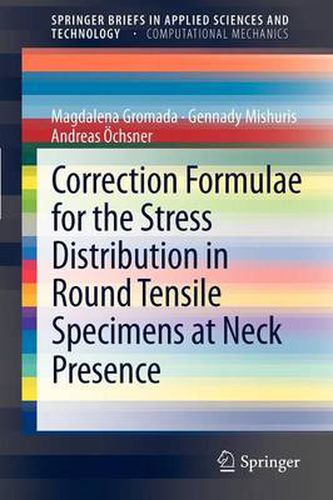Readings Newsletter
Become a Readings Member to make your shopping experience even easier.
Sign in or sign up for free!
You’re not far away from qualifying for FREE standard shipping within Australia
You’ve qualified for FREE standard shipping within Australia
The cart is loading…






This title is printed to order. This book may have been self-published. If so, we cannot guarantee the quality of the content. In the main most books will have gone through the editing process however some may not. We therefore suggest that you be aware of this before ordering this book. If in doubt check either the author or publisher’s details as we are unable to accept any returns unless they are faulty. Please contact us if you have any questions.
The monograph deals with methods to determine mechanical properties and evaluate the flow curve of ductile materials from the tensile test. It presents classical hypotheses concerning the onset of neck creation as well as the state of the art in determining the mechanical properties from the tensile test, with emphasis on the consequences of the neck formation. It revises derivations of formulae for the stress distribution in the minimal cross-section of the axisymmetrical specimen in the classical approaches proposed by Bridgman, Davidenkov / Spiridonova and Siebel as well as in the less famous formulae derived by Szczepinski and Malinin / Petrosjan. The revision is completed with solutions evaluated by the authors. In the monograph, the simplifying assumptions utilised in the classical approaches were carefully verified by numerical simulations accompanied by theoretical analysis. Errors imposed in the evaluation of the average axial stress acting on the minimal cross-section as a result of every particular simplification are estimated. The accuracy of all formulae to evaluate the flow curve is discussed. The significance of a high accurate determination can be seen in the context of numerical simulation (e.g. finite element computations), where the total error and accuracy is partly based on the accuracy of the material input.
$9.00 standard shipping within Australia
FREE standard shipping within Australia for orders over $100.00
Express & International shipping calculated at checkout
This title is printed to order. This book may have been self-published. If so, we cannot guarantee the quality of the content. In the main most books will have gone through the editing process however some may not. We therefore suggest that you be aware of this before ordering this book. If in doubt check either the author or publisher’s details as we are unable to accept any returns unless they are faulty. Please contact us if you have any questions.
The monograph deals with methods to determine mechanical properties and evaluate the flow curve of ductile materials from the tensile test. It presents classical hypotheses concerning the onset of neck creation as well as the state of the art in determining the mechanical properties from the tensile test, with emphasis on the consequences of the neck formation. It revises derivations of formulae for the stress distribution in the minimal cross-section of the axisymmetrical specimen in the classical approaches proposed by Bridgman, Davidenkov / Spiridonova and Siebel as well as in the less famous formulae derived by Szczepinski and Malinin / Petrosjan. The revision is completed with solutions evaluated by the authors. In the monograph, the simplifying assumptions utilised in the classical approaches were carefully verified by numerical simulations accompanied by theoretical analysis. Errors imposed in the evaluation of the average axial stress acting on the minimal cross-section as a result of every particular simplification are estimated. The accuracy of all formulae to evaluate the flow curve is discussed. The significance of a high accurate determination can be seen in the context of numerical simulation (e.g. finite element computations), where the total error and accuracy is partly based on the accuracy of the material input.